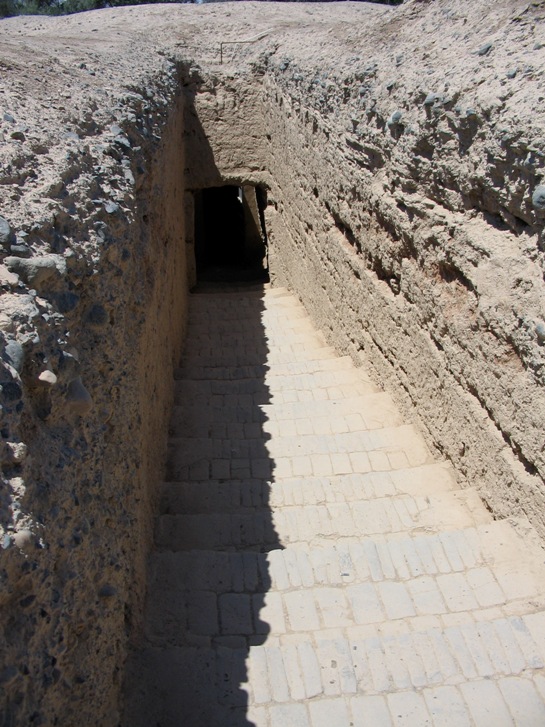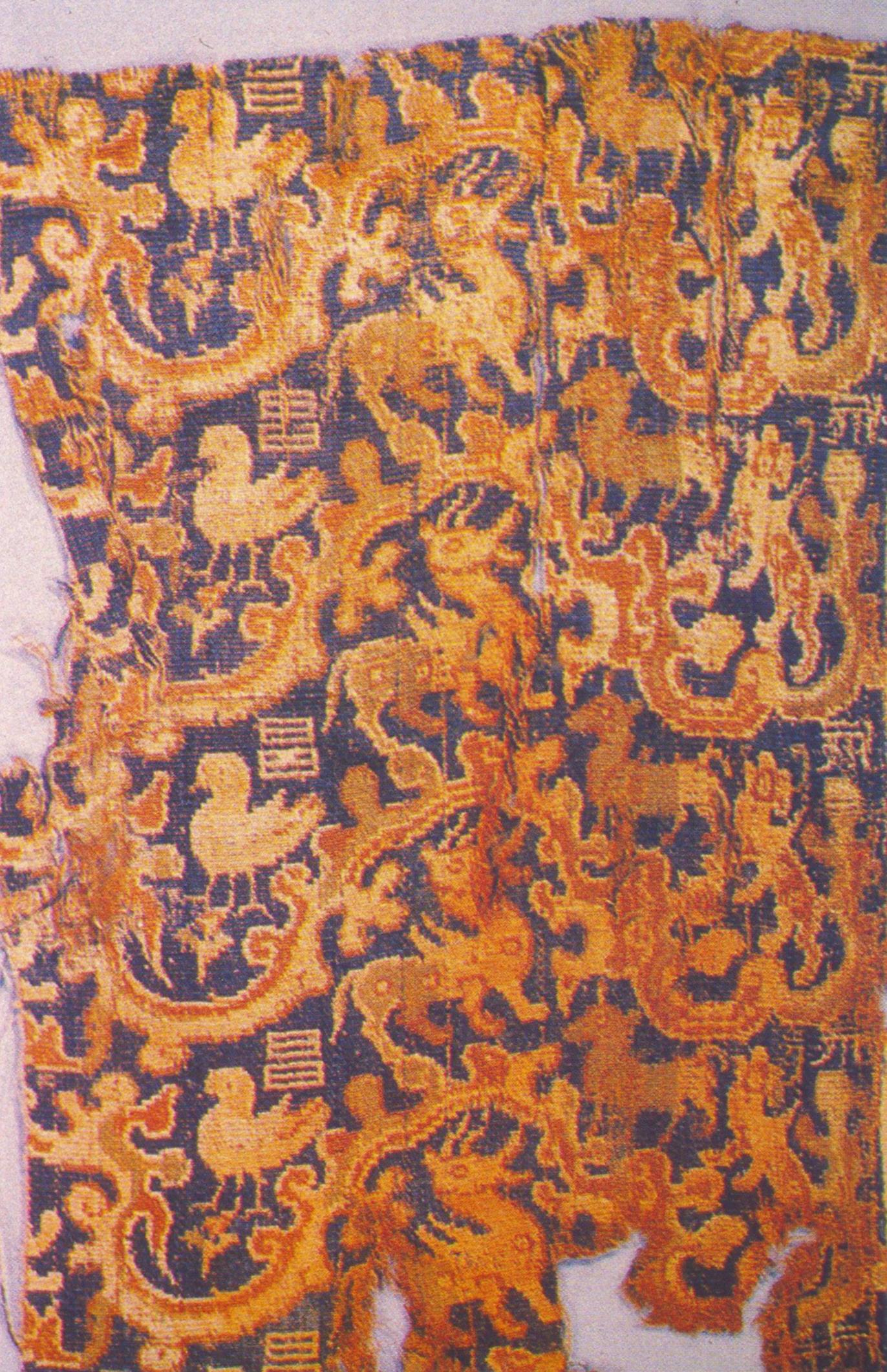|
Xinjiang Uyghur Autonomous Region Museum
The Xinjiang Uyghur Autonomous Region Museum, or Xinjiang Museum, is located in Urumqi, Xinjiang, China. Its address is 581 Xibei Road, Urumqi. The museum holds over 40,000 items of various cultural relics and specimens, including 381 national first-grade cultural relics ( 国家一级文物). In May 2008, the Xinjiang Museum was included in the first batch of the National first-grade museums of China. General The Xinjiang Museum was established in August 1959. The current museum building was built and opened for public on September 20, 2005. Exhibits The museum has been set up to show the four major exhibits: "Recover the Western Region's Glory of Yesterday - the exhibit of the historical cultural relics in Xinjiang", "the exhibit of Xinjiang's ethnic customs", "The Mummies of the Immortal World - the exhibit of the ancient mummies of Xinjiang,", “The Historical Monuments – the exhibit of Xinjiang's revolutionary history”. Gallery File:Xinjiang museum urumqi inside ... [...More Info...] [...Related Items...] OR: [Wikipedia] [Google] [Baidu] |
Astana Cemetery
The Astana Cemetery () is an ancient cemetery southeast of Turpan, in Xinjiang, China, from the ancient city of Gaochang. It served mainly as the cemetery for the descendants of Chinese settlers in Gaochang from the 4th century to the first half of the 8th century. The complex covers and contains over 1,000 tombs. Due to the arid environment many important artifacts have been well preserved at the tombs, including natural mummies. Description of the tombs The tombs consist of sloping passageways leading downwards for 4 or 5m to a rockcut entrance, about a meter wide and over a meter high. A step then leads into a brick-lined chamber, square or oblong and measuring between two and four meters wide, three to four meters long and up to two meters high. Some tombs contain one or two narrow antechambers in which there are niches on either side for guardian beasts in effigy. These figures show a variety of animal features and some have human faces. In their exuberance they resemb ... [...More Info...] [...Related Items...] OR: [Wikipedia] [Google] [Baidu] |
Buildings And Structures In Ürümqi
A building, or edifice, is an enclosed structure with a roof and walls standing more or less permanently in one place, such as a house or factory (although there's also portable buildings). Buildings come in a variety of sizes, shapes, and functions, and have been adapted throughout history for a wide number of factors, from building materials available, to weather conditions, land prices, ground conditions, specific uses, prestige, and aesthetic reasons. To better understand the term ''building'' compare the list of nonbuilding structures. Buildings serve several societal needs – primarily as shelter from weather, security, living space, privacy, to store belongings, and to comfortably live and work. A building as a shelter represents a physical division of the human habitat (a place of comfort and safety) and the ''outside'' (a place that at times may be harsh and harmful). Ever since the first cave paintings, buildings have also become objects or canvasses of much artis ... [...More Info...] [...Related Items...] OR: [Wikipedia] [Google] [Baidu] |
Hotan Cultural Museum
Hotan Cultural Museum or Hetian Cultural Museum () is a museum in Hotan, Xinjiang Xinjiang, SASM/GNC: ''Xinjang''; zh, c=, p=Xīnjiāng; formerly romanized as Sinkiang (, ), officially the Xinjiang Uygur Autonomous Region (XUAR), is an autonomous region of the People's Republic of China (PRC), located in the northwest ..., China. Founded in 1995, it has a range of silk fragments, wooden utensils and jewelry, and mummified corpses of a 10-year-old girl and a 35-year-old man with Eurasian faces, believed to be over 1,500 years old. See also * List of museums in China * Melikawat References Hotan Museums in Xinjiang Decorative arts museums in China Tourist attractions in Xinjiang Museums established in 1995 1995 establishments in China {{China-museum-stub ... [...More Info...] [...Related Items...] OR: [Wikipedia] [Google] [Baidu] |
Turpan Museum
Turpan Museum () is a museum in Turpan, Xinjiang, China. It has items from the Tang dynasty excavated from the Astana Graves which are located outside the town. Items include ancient silks, clothes and preserved corpses. See also * List of museums in China * Silk Road transmission of Buddhism Buddhism entered Han China via the Silk Road, beginning in the 1st or 2nd century CE. The first documented translation efforts by Buddhist monks in China were in the 2nd century CE via the Kushan Empire into the Chinese territory bordering the ... References Archaeological museums in China Buildings and structures in Turpan Museums in Xinjiang National first-grade museums of China {{PRChina-museum-stub ... [...More Info...] [...Related Items...] OR: [Wikipedia] [Google] [Baidu] |
List Of Museums In China
, there are 3,589 museums in China, including 3,054 state-owned museums (museums run by national and local government or universities) and 535 private museums. With a total collection of over 20 million items, these museums hold more than 8,000 exhibitions every year and 160 million people visits. Some museums of cultural relics, such as the Museum of Qin Terracotta Warriors and Horses in Xi'an, have become internationally known tourist attractions. The government has exchanges of cultural relics exhibitions between museums and promotes the display and exchanges of legal non-governmental collections. The museums are classified into several grades, with the national first-grade museums being the highest classification. List Below is a list of museums in China grouped by the provinces or municipalities where they are located. Anhui *Anhui Provincial Museum *Anhui Hall of Fame *Anhui Paleontology Fossil Museum *Bengbu Museum *China Huizhou Tax Museum *Ma'anshan Museum *She County ... [...More Info...] [...Related Items...] OR: [Wikipedia] [Google] [Baidu] |
Yingpan Man
The Yingpan man (Chinese: 营盘美男) is an ancient mummy which was excavated in the Yingpan cemetery located in the northeastern Tarim Basin The Tarim Basin is an endorheic basin in Northwest China occupying an area of about and one of the largest basins in Northwest China.Chen, Yaning, et al. "Regional climate change and its effects on river runoff in the Tarim Basin, China." Hydr .... The mummy was 1.98m (6 feet 6 inches) tall, and dates to the 4th-5th centuries CE. The deceased may have been Sogdian, and he was wearing clothes decorated with Hellenistic motifs. The mummy is located in the Xinjiang Museum. Gallery File:Red,20191110,by_Pu_Feng.jpg, Hellenistic motifs on the dress of the Yingpan man File:Detail of the caftan of the Yingpan man.jpg, Hellenistic motifs on the dress of the Yingpan man References Sources * {{cite journal , last1=Wang , first1=Tingting , last2=Fuller , first2=Benjamin T. , last3=Jiang , first3=Hongen , last4=Li , first4=Wenying , last5=W ... [...More Info...] [...Related Items...] OR: [Wikipedia] [Google] [Baidu] |
Old Uyghur Alphabet
The Old Uyghur alphabet was a Turkic script used for writing the Old Uyghur, a variety of Old Turkic spoken in Turpan and Gansu that is the ancestor of the modern Western Yugur language. The term "Old Uyghur" used for this alphabet is misleading because Qocho, the Uyghur (Yugur) kingdom created in 843, originally used the Old Turkic alphabet. The Uyghur adopted this "Old Uyghur" script from local inhabitants when they migrated into Turfan after 840. It was an adaptation of the Aramaic alphabet used for texts with Buddhist, Manichaean and Christian content for 700–800 years in Turpan. The last known manuscripts are dated to the 18th century. This was the prototype for the Mongolian and Manchu alphabets. The Old Uyghur alphabet was brought to Mongolia by Tata-tonga. The Old Uyghur script was used between the 8th and 17th centuries primarily in the Tarim Basin of Central Asia, located in present-day Xinjiang Uygur Autonomous Region, China. It is a cursive-joining alphabet with ... [...More Info...] [...Related Items...] OR: [Wikipedia] [Google] [Baidu] |
Tian Shan
The Tian Shan,, , otk, 𐰴𐰣 𐱅𐰭𐰼𐰃, , tr, Tanrı Dağı, mn, Тэнгэр уул, , ug, تەڭرىتاغ, , , kk, Тәңіртауы / Алатау, , , ky, Теңир-Тоо / Ала-Тоо, , , uz, Tyan-Shan / Tangritog‘, , also known as the Tengri Tagh or Tengir-Too, meaning the ''Mountains of Heaven'' or the ''Heavenly Mountain'', is a large system of mountain ranges located in Central Asia. The highest peak in the Tian Shan is Jengish Chokusu, at high. Its lowest point is the Turpan Depression, which is below sea level. One of the earliest historical references to these mountains may be related to the Xiongnu word ''Qilian'' ( zh, s=祁连, t=祁連, first=t, p=Qílián) – according to Tang commentator Yan Shigu, ''Qilian'' is the Xiongnu word for sky or heaven. Sima Qian in the ''Records of the Grand Historian'' mentioned ''Qilian'' in relation to the homeland of the Yuezhi and the term is believed to refer to the Tian Shan rather than the Qilia ... [...More Info...] [...Related Items...] OR: [Wikipedia] [Google] [Baidu] |
Greco-Bactrian
The Bactrian Kingdom, known to historians as the Greco-Bactrian Kingdom or simply Greco-Bactria, was a Hellenistic-era Greek state, and along with the Indo-Greek Kingdom, the easternmost part of the Hellenistic world in Central Asia and the Indian Subcontinent from its founding in 256 BC by Diodotus I Soter to its fall BC under the reign of Heliocles I. It covered much of present-day Afghanistan, Uzbekistan, Tajikistan and Turkmenistan, and at its zenith, parts of Iran and Pakistan. An extension further east with military campaigns may have reached central Gansu province in China. Bactria was ruled by the Diodotid dynasty and rival Euthydemid dynasty. The capitals of Ai-Khanum and Bactra were among the largest and richest of antiquity - Bactria itself was known as the ‘''land of a thousand golden cities’''. The Indo-Greek Kingdoms, as Bactrian successor states, would last until 10 AD. History Independence and Diodotid dynasty Diodotus, the satrap of Bactria (and probably t ... [...More Info...] [...Related Items...] OR: [Wikipedia] [Google] [Baidu] |
Xinjiang
Xinjiang, SASM/GNC: ''Xinjang''; zh, c=, p=Xīnjiāng; formerly romanized as Sinkiang (, ), officially the Xinjiang Uygur Autonomous Region (XUAR), is an autonomous region of the People's Republic of China (PRC), located in the northwest of the country at the crossroads of Central Asia and East Asia. Being the largest province-level division of China by area and the 8th-largest country subdivision in the world, Xinjiang spans over and has about 25 million inhabitants. Xinjiang borders the countries of Mongolia, Russia, Kazakhstan, Kyrgyzstan, Tajikistan, Afghanistan, Pakistan and India. The rugged Karakoram, Kunlun and Tian Shan mountain ranges occupy much of Xinjiang's borders, as well as its western and southern regions. The Aksai Chin and Trans-Karakoram Tract regions, both administered by China, are claimed by India. Xinjiang also borders the Tibet Autonomous Region and the provinces of Gansu and Qinghai. The most well-known route of the historic Silk Ro ... [...More Info...] [...Related Items...] OR: [Wikipedia] [Google] [Baidu] |



.jpg)




